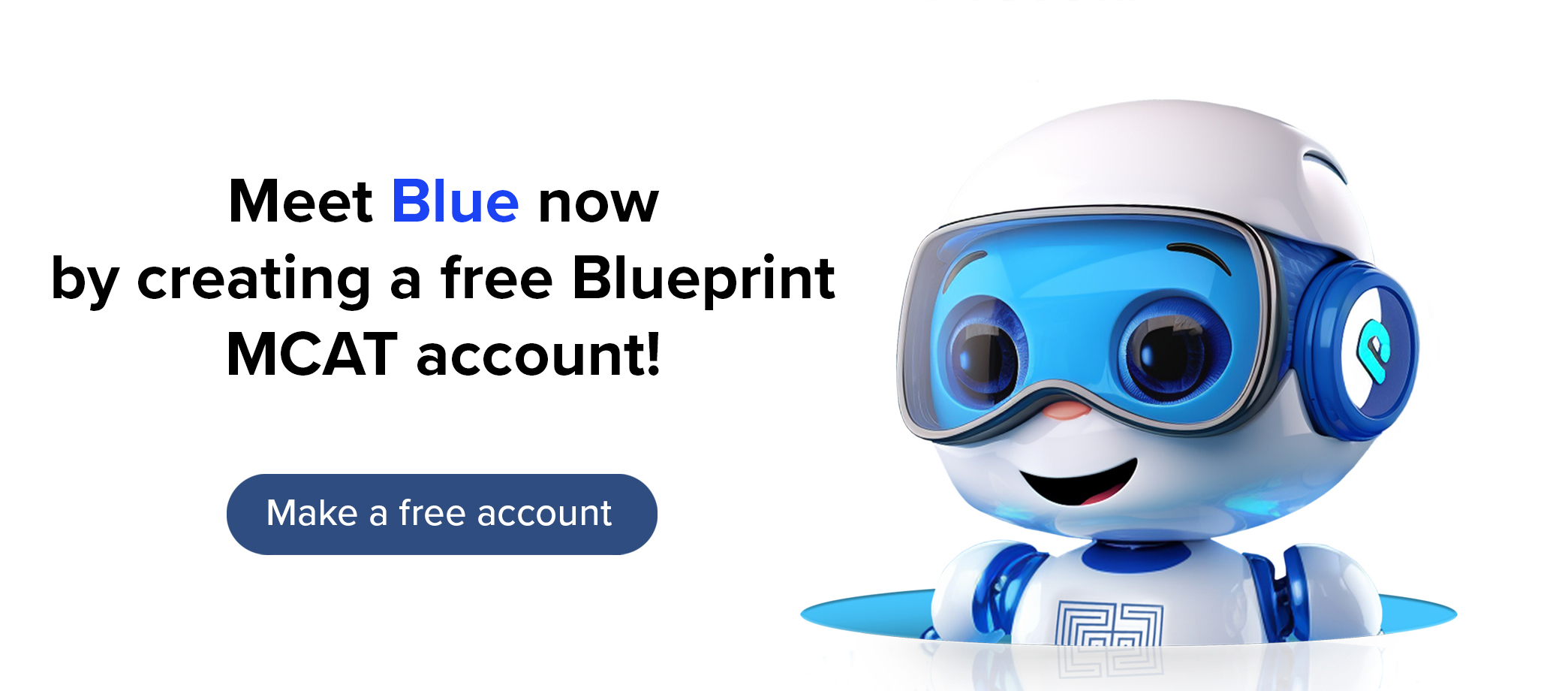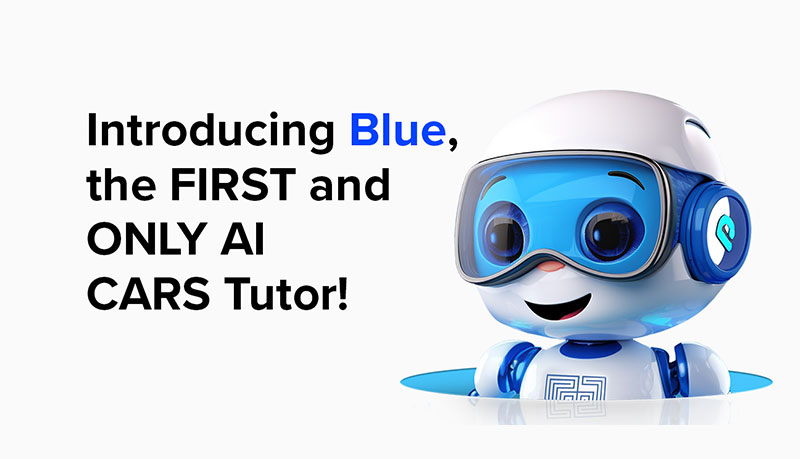The Critical Analysis and Reasoning Skills (CARS) section is often the most daunting aspect of the MCAT for students. Long, dry passages and questions covering diverse topics, from art and dance to political science and economics. The CARS question categories test skills you haven’t likely practiced in some time.
Unlike the science sections, which require you to apply science knowledge to the exam, everything you need to answer a CARS question lies within its passages.
Sounds easy enough, right? But just like an open book exam, it can feel impossible to study effectively without content to learn. However, here’s the good news: You’ve been practicing your CARS skills far longer than you have studied organic chemistry or sociology.
What Does CARS Test?
At its core, the CARS section tests the analysis and reasoning skills that will make you a successful medical student and, eventually, a good physician. Since the MCAT is a standardized test, there are standard ways it assesses these skills.
The questions fall into three distinct CARS question categories:
1. Foundations of Comprehension
2. Reasoning Within the Text
3. Reasoning Beyond the Text
Get a sneak peek of a CARS module from the Blueprint MCAT Self-Paced Course below for a quick overview of CARS Skills Categories.
Want to see more? Start a free trial of our self-paced course and get access to our customizable study planner, practice exam, in-depth analytics, and work with the FIRST and ONLY AI MCAT CARS Tutor, Blue!
Although you cannot memorize content for the CARS section, you can adopt approaches and strategies to improve your efficiency and accuracy for CARS passages and questions.
Here, we cover what you need to know about each question category to be successful, including what each category means, how to identify CARS question categories, and specific strategies to improve your score within each category.
Foundations of Comprehension
Foundation of Comprehension (FoC) questions determine a student’s basic understanding of the concepts and ideas presented in the passage. Think of it as assessing your foundational understanding of the passage content before you interpret and analyze the text at a deeper level. There are two necessary skills within this CARS question category:
1. Understanding the Text’s Basic Components
FoC questions assess your understanding of the passage’s fundamental aspects, including the main idea, tone, and thesis. They may also ask you to define keywords or phrases and may focus on the passage as a whole or on specific portions. Many CARS passages are unfamiliar and have sophisticated language and complex writing styles, so their questions may be surprisingly difficult to answer accurately (especially under time constraints).
As you read the passage, ask yourself what the main idea of each paragraph is. Pay special attention to transitional phrases, such as “consequently,” “therefore,” and “for example”; these phrases can clue you in to important perspective shifts or new concepts and ideas. It is also critically important to pay attention to the author’s tone. When a passage presents an opinion or states a position, determine who that stance belongs to (whether it is the author or someone else within the text). Overall, increasing your intentionality as you read (i.e., keeping the main idea and tone in mind) can greatly improve your score on these questions.
2. Inferring Meaning From Rhetorical Devices, Word Choice, and Text Structure
This skill is all about the unspoken ideas within a passage. Although an author may not explicitly state a position or idea, you can make assumptions based on the text’s structure, the words they use to convey their perspective and others’ perspectives, and the rhetorical devices they employ, such as paradoxes, metaphors, or abrupt transitions. FoC questions may ask you to identify points of view, interpret the ending of a passage, or explain cause-and-effect relationships within the text.
To be successful, identify the context of the applicable passage information, paying attention to the tone, words, and opinions. It is also helpful to link the important ideas in each paragraph as you read to understand how the parts of the passage connect.
Reasoning Within the Text
Reasoning Within the Text (RWT) questions require you to combine separate passage components into a big-picture interpretation of the text. Most often, the cornerstone of these questions is a passage claim, theme, or argument, which you must assess against unstated conclusions or assumptions. There is one skill within this category:
1. Integrating Different Components of the Text To Increase Comprehension
This skill encompasses the broad set of critical thinking skills you need to interpret a passage. These are skills we use daily to assess someone’s credibility or intentions, including the soundness of an argument. We also use these skills to recognize relationships within arguments.
RWT questions may ask you to identify statements that weaken/strengthen an argument or determine the strength of the evidence in an argument. As you read the passage, question the author and the information they present, asking yourself if the argument is biased or one-sided.
It is important to note that you should avoid allowing your own opinions or thoughts to influence your textual interpretation. If you disagree with the argument or conclusion, it does not mean the argument is unsound and the evidence is incredible. CARS passages include all the information you’ll need and the only information you should use to answer each question.
Reasoning Beyond the Text
Reasoning Beyond the Text (RBT) questions tend to be the most difficult category, requiring some mental gymnastics to answer accurately and efficiently. These questions ask you to combine and compare the passage information with new information in the question stem. There are two distinct yet highly related skills in this category:
1. Applying or Extrapolating Ideas From the Passage to New Contexts
RBT questions require you to apply passage information to new situations or contexts and are aptly dubbed “application questions.” Most often, these questions ask how the passage information relates to another field. When reading the text, summarize the pertinent passage information that the question asks about first. Next, read the answer options, determine the outcome of applying the passage information to the new context, and determine the most likely result.
For example, a question may ask which example (A, B, C, or D) is most consistent with the author’s position. The correct answer would be the one that’s most consistent with the author’s position in the passage. Analogy questions also fall under this skill, as they require you to apply the passage relationships to analogies in the answer choices. Simplifying answer choices to their literal relationships is the best way to determine the answer most consistent with the text.
2. Assessing the Impact of Introducing New Factors, Information, or Conditions to Ideas From the Passage
This skill is essentially the reverse of the previous skill; instead of applying passage ideas and concepts to new information, these questions require you to incorporate new information into passage ideas and concepts. If you haven’t guessed, we call these “incorporation questions.” Most of the time, you will have to decide whether the new information contradicts or aligns with the passage information. This assumes the passage itself is malleable, meaning it is not the fixed framework we assume for application questions. Key things to remember for RBT questions are the author’s thesis and the passage’s tone.
CARS Section Next Steps
Hopefully, the CARS section feels a little less mysterious now that you know the core skills it tests and different CARS question categories. Adopting these skills and strategies can help you improve your CARS score and ace the MCAT! Keep in mind that some CARS themes pop up repeatedly, such as analyzing the tone and main ideas and identifying unstated concepts. Practice is the best way to improve your CARS skills and identify your areas of weakness.
Blueprint offers the best MCAT prep tools that can improve your score by 15+ points on average. Get all the practice you need with practice MCAT exams, an AI-powered QBank, MCAT flashcards, and more. Try it free today!






